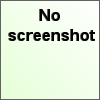gdl-coyote

The main content of the library is the Coyote Graphics System (CGS), a collection of Coyote Library programs that turn the traditional GDL/IDL graphics commands (e.g., Plot, Contour, Surface, TV, etc.) into modern programs.
The most important features of Coyote Graphics System are:
* The commands work identically on the display, in PostScript, and in the Z-graphics buffer. * The commands can be displayed automatically in resizable graphics windows. * The commands automatically create high quality PostScript, PDF, and raster file output. * CGS graphics visualizations can be saved and restore later, or e-mailed to colleagues. * The commands work identically in an indexed or decomposed color environment. * The commands can use colors by name (e.g., "red", "dodger blue"). * CGS commands are faster (often much faster) than the equivalent IDL function graphics commands. * Greek letters and other symbols can be directly embedded in Coyote Graphics text. * The commands fix the most annoying quirks (e.g., contour holes and levels) in traditional IDL commands.